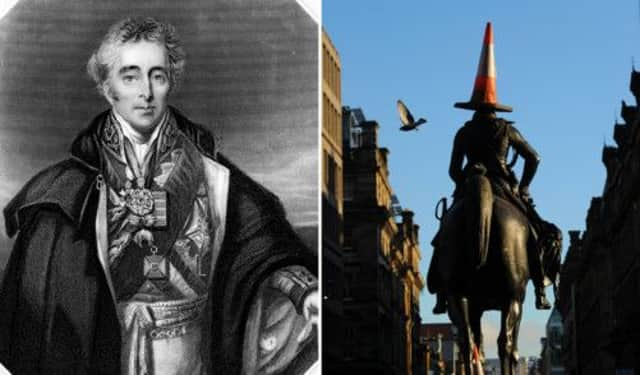Scots monuments: Glasgow Duke of Wellington statue


But it is quite unlike others of its kind in the UK. For one, its presence in Glasgow has taken on a greater significance beyond the celebration of Arthur Wellesley, 1st Duke of Wellington. It has also come to symbolise the city itself - and it’s all thanks to the unusual appendage the Duke acquired at some point in the 80s.
Widely believed to be the handiwork of a drunk/intrepid student, the A-listed Duke of Wellington monument has worn a bright orange traffic cone for most of the last three decades.
Advertisement
Hide AdThe practice of placing a cone on the statue has become a long-standing tradition, and is often said to represent Glasgow’s irreverent sense of humour, as well as a symbolic affront to authority and pomposity. Despite (or because of) the two-time Prime Minister’s incongruous headgear, the statue has become famous worldwide, and is listed by the Lonely Planet guide as being among the world’s oddest monuments.
Over the last 30 years, city authorities have swayed between tolerance of the tradition and condemnation of what some conservationists have called an act of vandalism. However, the statue was last year adorned with a commemorative golden cone to mark Scottish athletes’ impressive medal haul during the London Olympics, an act that arguably gave weight to the view that ‘coning’ the Duke should be seen as a recognised part of the monument’s heritage.
READ MORE